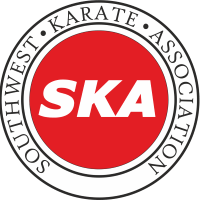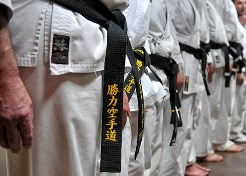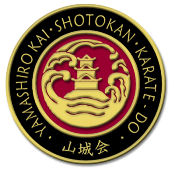
Training fees and license
Prices correct as of Nov 2023
The first session with the club is free of charge to enable students to take part and give them a chance to experience Karate.
If students decide to continue a license fee is required for membership and insurance. Each training session costs £7.00 for adults and £5.00 for juniors.

What do I wear to train?
What kind of clothing do I need to bring to train
When first training with the club loose attire is reccomended, tracksuit bottoms and a Tshirt are usually worn. If students continue to train then a Karate Gi (suit) can be obtained through the club.

Club badges available
Embroidered club badges are available on new Karate Dogi's
The club badge above is available embroidered on new Karate uniforms, please contact the club instructors or secretary for details.